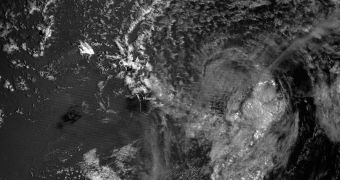Officials with NASA and the US National Oceanic and Atmospheric Administration (NOAA) announce that the sensitivity of instruments aboard the Suomi National Polar-orbiting Partnership (Suomi-NPP) satellite is currently being improved, in order to assist experts this hurricane season.
The season is scheduled to start on June 1, 2014, when tropical storms and depression will start forming in the Atlantic Oceans in greater numbers. Suomi NPP features a suite of instruments capable of analyzing these atmospheric formations, and predicting how they will evolve.
These capabilities will be improved even further for the 2014 hurricane season, as opposed to last year's season, experts say. The goal is to make NOAA's weather forecasting more effective and in-depth than ever. The agency provides data to a host of local authorities in Hurricane Alley states.
Other satellites like Suomi NPP – the entire US Polar Environmental class – work together with spacecraft in the NOAA/NASA Geostationary Operational Environmental Satellites (GOES) system to provide accurate views of developing atmospheric patterns around the globe.
But the performances of Suomi NPP can be improved even further from their original specifications, primarily through tweaking the Visible Infrared Imaging Radiometer Suite (VIIRS) instrument. VIIRS allows for observing the atmosphere at night, or through thick cloud and fog covers.
Its performances exceed those of Moderate Resolution Imaging Spectroradiometer-class (MODIS) instruments such as those installed on the American space agency's Terra and Aqua satellites.
VIIRS data could also be combined with readings obtained by radar instruments, such as that aboard the Tropical Rainfall Measuring Mission (TRMM) satellite, which is operated by NASA and JAXA, the Japanese Aerospace Exploration Agency.
The two organizations will next month launch yet another satellite, called the Global Precipitation Measurement (GPM) mission, which will contribute to refining and improving on VIIRS data. Additional storm-tracking capabilities will be provided by the Advanced Technology Microwave Sounder instrument on Suomi NPP.
“This is a new source for gathering temperature and moisture structure within and around the storm, showing us what is steering the storm, and affecting changes in the storm intensity,” explains the chief of the technology and science branch at the NOAA National Hurricane Center, Mark DeMaria.

 14 DAY TRIAL //
14 DAY TRIAL //